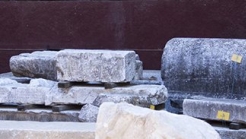

Greece
The Byzantine museum is located northeast of the Acropolis (Its-Kaleh) of the castle of Ioannina. It is a two storey building, on the ground floor of which the main exhibition is housed, comprising of findings (sculptures, coins, ceramics, pictures, bema doors, gospels) from the 4th to the 19th century.
The Byzantine museum is located northeast of the Acropolis (Its-Kaleh) of the castle of Ioannina. It is a two storey building, on the ground floor of which the main exhibition is housed, comprising of findings (sculptures, coins, ceramics, pictures, bema doors, gospels) from the 4th to the 19th century.
The permanent exhibition is laid out in seven rooms, corresponding to three exhibitional units: Paleochristianic, Byzantine, Metabyzantine. The jewellery exhibition is a part of the museum. There are exhibited ecclesiastic and various personal collections’ exhibits.
The museum is equipped with a workshop for the maintenance of ceramics, murals, mosaics and stone, as well as storage space in the underground area of findings’ reception.
The aim of the Ioannina Byzantine Museum is to collect, protect, study and promote works and objects of art from the 4th to the 19th century. Also, to be the center of a space of civilization, housing musical and theatrical events, temporary exhibitions etc.


The Benaki Museum is a complex architectural composition, with an interesting history.The aim of the museum is the protection, preservation, and showcasing of the cultural heritage, as well as the connection of it to the modern social and scientific network.


The Tegea Archaeological Museum is a place where the visitor can enjoy works belonging to the highest inspiration times of ancient Greek sculpture.


Although Crete hosts one-quarter of Greece’s annual visitors, it’s still possible to escape the crowds by heading south. Thanks to the rugged mountains that stretch across much of the island’s spine, southern Crete remains a place apart.
1039 Ε 6061 01515 00